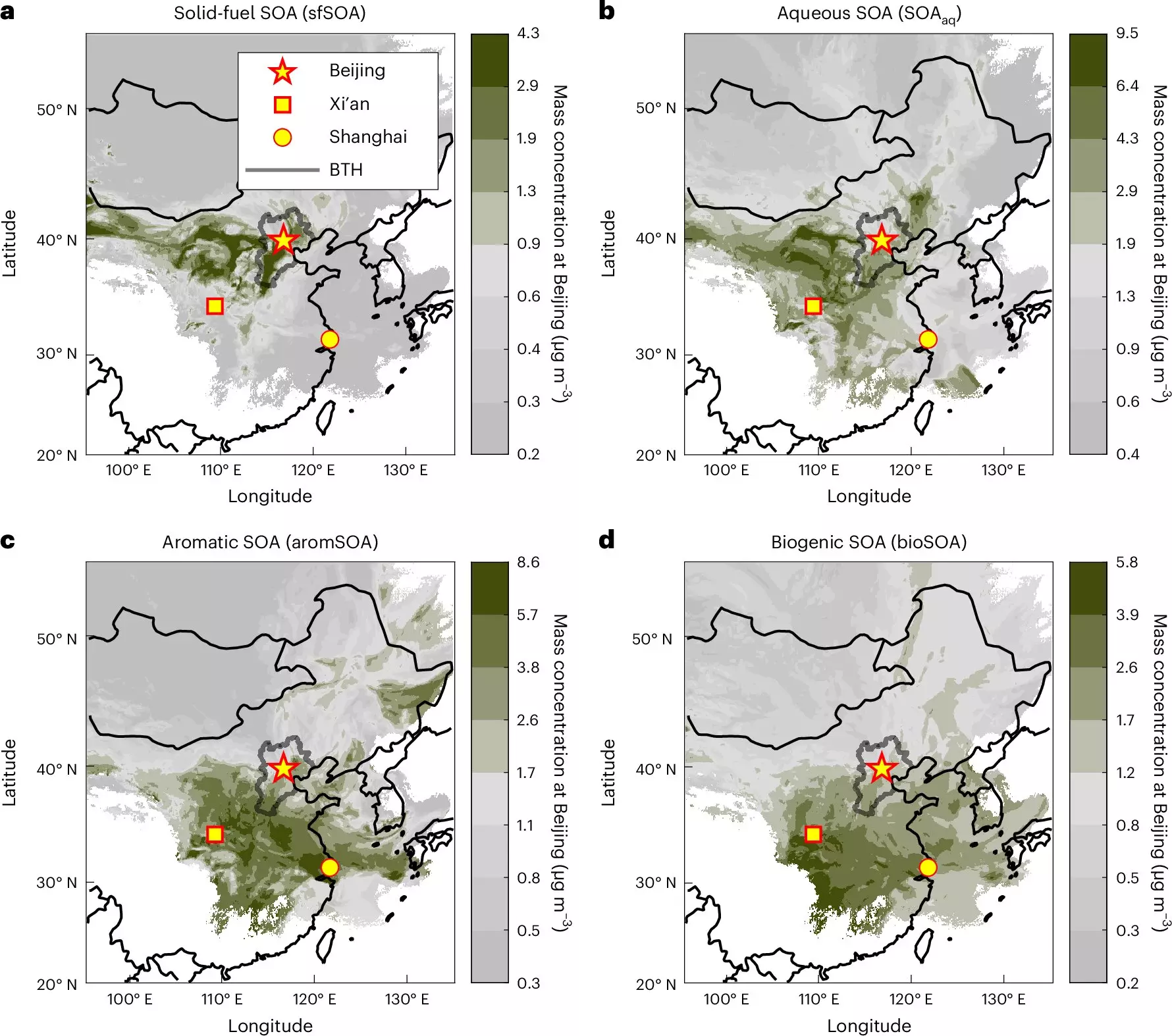Air pollution poses a severe threat not only to the environment but also to global health, contributing to millions of premature deaths each year. This grim reality is highlighted by the persistent smog that blankets urban centers like Beijing, where millions of inhabitants grapple with the dire consequences of poor air quality. Amidst growing public concern over environmental health, recent research led by the Paul Scherrer Institute (PSI) offers new hope for understanding and mitigating this pressing issue. The collaboration between international researchers sheds light on the sources of Beijing’s air pollution through innovative methodologies, emphasizing the necessity of precise data for effective policy-making and public health interventions.
Groundbreaking Methodology in Air Quality Research
Traditionally, identifying pollution sources has proven to be complex, as pollutants undergo transformations throughout their atmospheric journey. This inherent difficulty has hindered effective remediation strategies. However, the new research spearheaded by Kaspar Dällenbach and his team has demonstrated an impressive leap forward, utilizing an advanced mobile aerosol mass spectrometer to conduct real-time molecular analysis of smog in Beijing. Unlike previous methods, this technique enables researchers to dissect the molecular structure of aerosols with unprecedented accuracy, illuminating the origins and chemical processes involved in air pollution.
The approach allows for a nuanced understanding of the evolving composition of smog, revealing critical distinctions between primary aerosols—those directly emitted into the atmosphere—and secondary aerosols, which are formed through atmospheric reactions. This differentiation is particularly significant in Beijing, providing essential insights into the various pollution sources that contribute to the city’s notorious smog issues.
Dälenbach’s research unearthed compelling findings: the sources of particulate matter in Beijing are not static but rather fluctuate with the seasons. In winter, a notable uptick in secondary organic aerosols was linked to the combustion of wood and coal primarily sourced from the greater Beijing-Tianjin-Hebei region. The region’s reliance on fossil fuels for heating exacerbates the already dire air quality conditions during the colder months. In contrast, the summer months see a shift, wherein the smog is driven by urban emissions, particularly from traffic and industrial activities along the densely populated Xi’an-Shanghai-Beijing corridor.
This seasonality underscores the complexity of regional smog production and points to the need for targeted, context-specific interventions. Addressing winter pollution might necessitate tackling residential heating practices, whereas summer solutions could involve tighter regulations on transportation and industrial emissions.
The Regional Nature of Smog
One of the most pivotal insights from the study is the regional scale of air pollution, contradicting the misconception that pollution is merely a localized problem. Dällenbach explains how Beijing’s air quality is significantly influenced by pollutant transport from afar, emphasizing that pollution is a “large-scale regional phenomenon.” This interconnected nature of air quality issues compels a coordinated response that transcends city limits, requiring collaboration and regulatory measures across the entire Beijing metropolitan area and its surroundings.
Such recognition of the regional dynamics at play is crucial for policymakers. Effective air quality management must consider not only urban centers like Beijing but also the wider geographical area from which pollution originates. Only with a broad regional perspective can comprehensive strategies be developed to mitigate the impact of smog.
The methods developed by Dälenbach and his team have broader implications beyond Beijing, enabling the same analytical techniques to be applied in Europe and emerging urban centers in the Global South. As cities worldwide contend with air quality challenges akin to those experienced in Beijing, the findings of this research provide a template for future investigations and interventions, advancing our understanding of aerosols and their sources across diverse settings.
Furthermore, the importance of such scientific efforts cannot be overstated: reducing air pollution not only safeguards public health but also contributes to climate change mitigation efforts. Knowledge obtained from studies like this will help shape policies that foster cleaner, healthier environments, ultimately benefiting millions in urban areas worldwide.
The international effort led by the Paul Scherrer Institute has made significant strides in understanding the complex sources of Beijing’s smog. By revealing the intricate ties between local emissions and regional air quality, this research advocates for collaborative solutions and shows the importance of scientific exploration in addressing one of humanity’s most pressing issues.


Leave a Reply